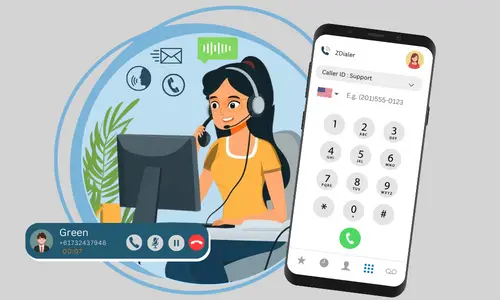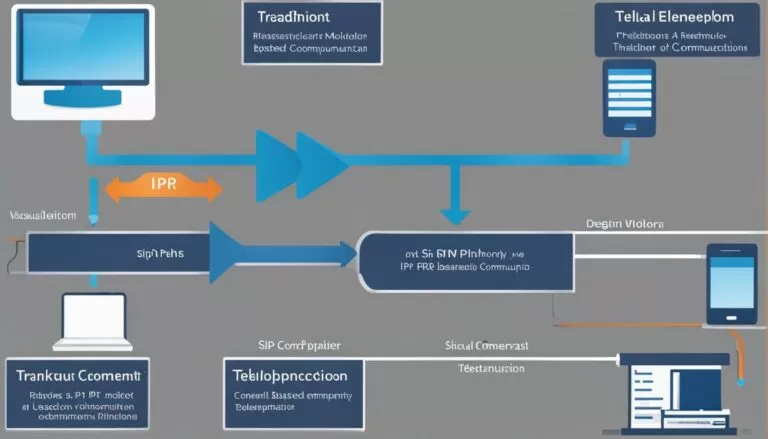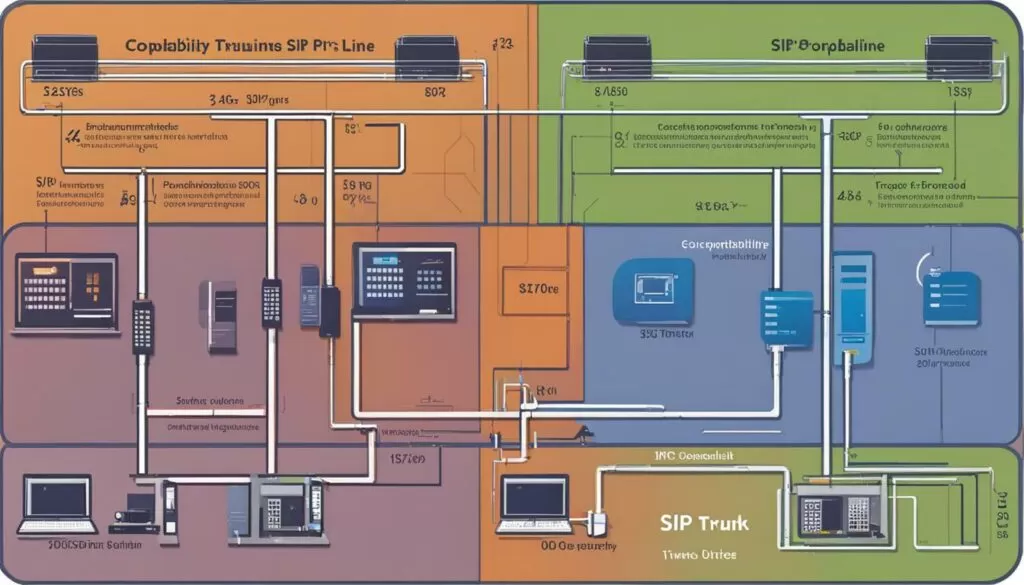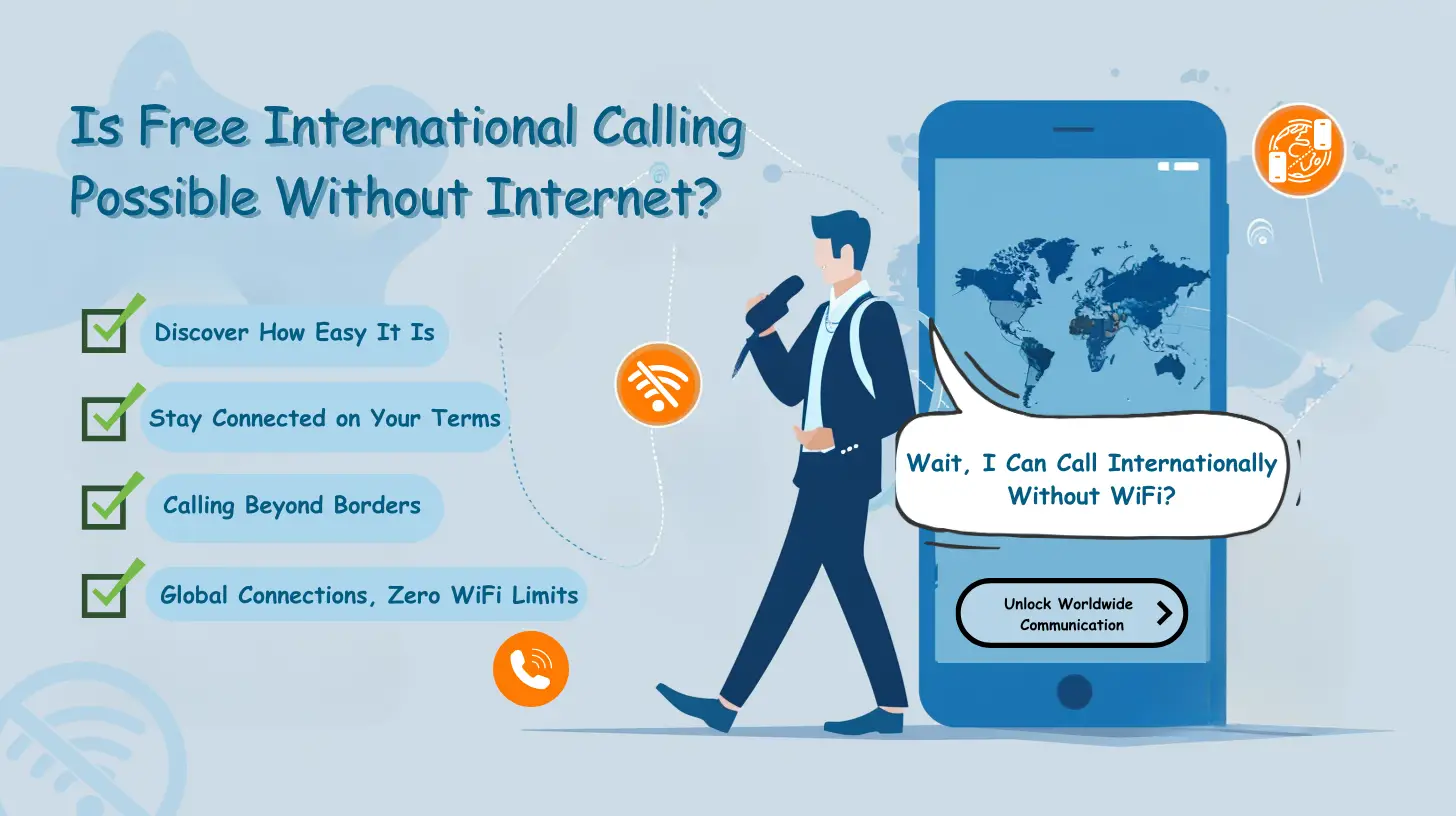In the world of telecommunication solutions, pri line vs sip trunk are often compared, and in this article, we will delve into the differences between these two options. PRI Line utilizes physical copper phone lines to establish a digital connection with the public switched telephone network (PSTN), allowing for simultaneous handling of local and long-distance calls and offering enhanced security. On the other hand, SIP Trunk relies on internet connections and VoIP technology to transmit voice and multimedia communications, offering scalability, flexibility, and integration with existing PRI trunks. The choice between PRI Line and SIP Trunk depends on various factors, including business needs, scalability, call quality, and cost.
- PRI Line utilizes physical copper phone lines for voice communications and offers simultaneous handling of local and long-distance calls, as well as enhanced security.
- SIP Trunk relies on internet connections and VoIP technology to transmit voice and multimedia communications, providing scalability, flexibility, and integration with existing PRI trunks.
- The choice between PRI Line and SIP Trunk depends on factors such as business needs, scalability, call quality, and cost.
- PRI Line is suitable for businesses with traditional phone systems and a focus on security.
- SIP Trunk is preferable for businesses with a distributed workforce or operating in a hybrid work environment.
PRI Line: A Traditional Communication Solution
PRI Line, also known as Primary Rate Interface Line, is a traditional telecommunication solution that has been widely used by businesses for voice communications. It utilizes physical copper phone lines to establish a digital connection between the business site and the public switched telephone network (PSTN). This reliable and secure technology has proven its effectiveness over the years, making it a popular choice for many organizations.
One of the key advantages of PRI Line is its ability to handle both local and long-distance calls simultaneously. This makes it an efficient solution for businesses that have a high volume of incoming and outgoing calls. Another significant benefit is the greater security it offers compared to newer technology like SIP Trunking. With dedicated physical lines, PRI Line ensures a more protected and private communication channel for sensitive business conversations.
PRI Line vs SIP Trunk: A Comparison of Features
| PRI Line | SIP Trunk |
|---|---|
| Uses physical copper phone lines | Relies on internet connections and VoIP |
| Handles local and long-distance calls simultaneously | Allows for scalable voice and multimedia communications |
| Provides greater security | Offers flexibility and integration with existing PRI trunks |
It’s important to note that while PRI Line is a tried and tested solution, it may not be suitable for all businesses. SIP Trunking, on the other hand, is a newer technology that offers scalability, flexibility, and integration with existing PRI trunks. This makes it an ideal choice for businesses with a distributed workforce or those operating in a hybrid work environment. The decision between PRI Line and SIP Trunk ultimately depends on factors such as business needs, scalability requirements, call quality expectations, and cost considerations.
SIP Trunk, short for Session Initiation Protocol Trunking, is a newer technology that leverages internet connections and VoIP to transmit voice and multimedia communications. It offers numerous benefits that make it a favorable choice for businesses in today’s dynamic communication landscape.
One of the key advantages of SIP Trunk is its scalability. As businesses grow and expand, SIP Trunk allows for seamless integration of additional communication lines without the need for physical infrastructure changes. This flexibility ensures that businesses can easily adapt to changing communication needs, whether it’s accommodating a larger workforce, opening new branches, or expanding operations internationally.
Furthermore, SIP Trunk offers enhanced flexibility by enabling businesses to connect their existing PRI trunks with modern communication systems. This integration allows for a hybrid approach that combines the reliability and security of PRI Line with the scalability and cost-efficiency of SIP Trunk. It ensures that businesses can leverage the benefits of both technologies and tailor their communication solutions to specific needs.
| Benefits of SIP Trunk | Features of SIP Trunk |
|---|---|
| Scalability | Ability to add or remove communication lines as needed |
| Flexibility | Integration with existing PRI trunks for hybrid solutions |
| Cost-efficiency | Reduced expenses compared to traditional PRI Line |
Considering these benefits, SIP Trunk is particularly suitable for businesses with a distributed workforce or those operating in a hybrid work environment. It enables seamless communication across various locations and supports remote collaboration, enhancing productivity and efficiency.
In conclusion, SIP Trunk offers a modern communication solution that combines scalability, flexibility, and integration capabilities. By leveraging internet connections and VoIP technology, businesses can enhance their communication infrastructure and adapt to evolving demands. Whether it’s expanding operations, accommodating remote work, or seeking cost-efficiency, SIP Trunk provides the necessary tools for businesses to thrive in today’s interconnected world.
When deciding between PRI Line and SIP Trunk for your business, there are several important factors to consider that can greatly impact your telecommunication needs. From cost and reliability to scalability and flexibility, each solution has its own strengths and considerations that can influence your decision-making process.
First, let’s look at the cost comparison between PRI Line and SIP Trunk. While PRI Line may have higher upfront costs due to the need for physical copper phone lines, it can offer long-term savings in terms of call rates and maintenance. On the other hand, SIP Trunk relies on internet connections, which may come with additional costs like monthly internet service fees and security measures.
Reliability is another crucial factor to consider. PRI Line, being a traditional communication solution, is known for its high call quality and reliability. However, it can be vulnerable to physical line damage and power outages. SIP Trunk, on the other hand, relies on internet connections, which may be subject to occasional disruptions. However, with proper setup and backup plans, SIP Trunk can provide reliable communication services.
Scalability and flexibility are also important considerations for businesses. PRI Line may require additional physical lines and equipment when scaling up, which can be time-consuming and costly. SIP Trunk, on the other hand, offers greater scalability and flexibility, allowing businesses to easily add or remove lines based on their needs. It also integrates well with existing PRI trunks, allowing for a hybrid solution that combines the benefits of both technologies.
Factors to Consider when Choosing between PRI Line and SIP Trunk
| Factors | PRI Line | SIP Trunk |
|---|---|---|
| Cost | Higher upfront costs, potential long-term savings | Potential additional costs for internet service and security measures |
| Reliability | High call quality and reliability, vulnerable to physical line damage and power outages | Potentially occasional disruptions but can be minimized with proper setup and backup plans |
| Scalability and Flexibility | Requires additional physical lines and equipment when scaling up, less flexible | Greater scalability and flexibility, easily add or remove lines, integrates with existing PRI trunks |
Ultimately, the choice between PRI Line and SIP Trunk depends on your specific business needs and priorities. Consider factors such as cost, reliability, scalability, and flexibility, and determine which solution aligns best with your telecommunication requirements. It may also be beneficial to consult with a telecommunications specialist to fully understand the implications and advantages of each option.
PRI Line offers several advantages and benefits that make it a preferred choice for many businesses in need of reliable and secure voice communication. One of the key advantages of PRI Line is its ability to handle both local and long-distance calls simultaneously. This means that businesses can efficiently manage their communication needs without any limitations on geographical boundaries.
Another advantage of PRI Line is its greater security compared to SIP Trunk. Since PRI Line uses physical copper phone lines, it provides a dedicated and secure connection. This is especially important for businesses that prioritize data security and confidentiality.
Additionally, PRI Line offers compatibility with traditional phone systems, allowing businesses to leverage their existing infrastructure. This ensures a smooth transition to PRI Line without the need for significant changes or additional investments in new equipment.
Overall, PRI Line provides businesses with the reliability and security they need for their voice communication. It enables efficient handling of both local and long-distance calls, offers greater security compared to SIP Trunk, and seamlessly integrates with existing phone systems.
- Simultaneous handling of local and long-distance calls
- Greater security and data confidentiality
- Compatibility with traditional phone systems
Table: Comparison of PRI Line and SIP Trunk
| Factors | PRI Line | SIP Trunk |
|---|---|---|
| Call Quality | Excellent | Depends on internet connection quality |
| Scalability | Less flexible | Highly scalable |
| Cost | Higher upfront costs, lower long-term costs | Lower upfront costs, higher long-term costs |
SIP Trunk: Advantages and Benefits
SIP Trunk offers a range of advantages and benefits that make it an attractive choice for businesses seeking flexibility, scalability, and cost-effective communication solutions. With SIP Trunk, businesses can leverage their existing internet connections and VoIP technology to transmit voice and multimedia communications. This allows for seamless integration with existing PRI trunks, making it a convenient choice for businesses looking to upgrade their communication systems.
One of the key benefits of SIP Trunk is its scalability. Businesses can easily scale up or down their communication capabilities based on their needs. This flexibility is particularly advantageous for businesses with a distributed workforce or those operating in a hybrid work environment. With SIP Trunk, businesses can adapt their communication infrastructure to accommodate remote employees, branch offices, and temporary work locations.
Another advantage of SIP Trunk is its compatibility with modern communication systems. It provides businesses with the opportunity to take advantage of advanced features and functionalities, such as unified communications, video conferencing, and mobile integration. These capabilities enhance collaboration and productivity, enabling businesses to stay connected and competitive in today’s fast-paced marketplace.
Cost-effectiveness is another key benefit of SIP Trunk. By leveraging internet connections for voice communications, businesses can significantly reduce their telecommunication costs. SIP Trunk eliminates the need for separate PRI lines, which can be expensive to install and maintain. It also provides the flexibility to pay for only the required number of channels, allowing businesses to optimize their resources and control their expenses.
| Advantages of SIP Trunk |
|---|
| Scalability |
| Compatibility with modern communication systems |
| Cost-effectiveness |
With its scalability, compatibility, and cost-effectiveness, SIP Trunk is a viable option for businesses looking to modernize their communication infrastructure. However, it’s important to carefully assess business needs and consider factors such as call quality, reliability, and initial setup costs before making a decision. By choosing the right communication solution, businesses can enhance their productivity, improve customer interactions, and stay ahead in the competitive business landscape.
PRI Line vs SIP Trunk: Cost Comparison
One crucial aspect to consider when choosing between PRI Line and SIP Trunk is the cost associated with each option. PRI Line, being a traditional communication solution, typically requires the installation of physical copper phone lines, which can result in higher upfront costs. Additionally, businesses may also need to invest in expensive hardware and equipment to support the PRI infrastructure.
On the other hand, SIP Trunking, being a modern technology that relies on internet connections and VoIP, offers more cost-effective solutions. Since SIP Trunking operates over existing internet connections, it eliminates the need for additional infrastructure installations, reducing upfront costs. Moreover, businesses can also save on long-distance call charges as SIP Trunking enables free or low-cost internet-based calling.
Cost Comparison Table:
| Cost Factors | PRI Line | SIP Trunk |
|---|---|---|
| Upfront Costs | Higher due to physical infrastructure requirements | Lower as no physical infrastructure installation is needed |
| Ongoing Expenses | Higher due to maintenance and hardware costs | Lower as SIP Trunking utilizes existing internet connections |
| Long-Distance Call Charges | May be higher, depending on the provider | Lower or free, depending on the internet service provider |
| Scalability | Can be costly to expand or upgrade | More cost-effective as it allows easy scalability |
It is important to note that the cost comparison between PRI Line and SIP Trunk is not solely based on upfront expenses. Factors such as ongoing expenses, long-distance call charges, and scalability should also be taken into consideration when evaluating the overall cost-effectiveness of each solution for your business needs.
Ultimately, the decision between PRI Line and SIP Trunk should be based on a thorough assessment of your business requirements, including call volume, budget, and growth plans. By carefully evaluating the costs and benefits of each option, you can make an informed decision that aligns with your telecommunication needs and financial goals.
PRI Line vs SIP Trunk: Call Quality and Reliability
When it comes to voice communication, call quality and reliability are of utmost importance for any business. Whether connecting with clients or collaborating with colleagues, a seamless and dependable communication experience is essential. In this section, we will explore the call quality and reliability aspects of PRI Line and SIP Trunk, helping you make an informed decision for your business.
With PRI Line, call quality is generally considered to be excellent. As a traditional communication solution that uses physical copper phone lines, PRI Line offers reliable and crystal-clear voice transmissions. The dedicated nature of PRI Line ensures that you have a direct and secure connection to the public switched telephone network (PSTN), resulting in consistent call quality without any disruptions or delays.
On the other hand, SIP Trunk, which relies on internet connections and VoIP technology, offers varying degrees of call quality and reliability. The call quality of SIP Trunk can be influenced by factors such as network infrastructure, bandwidth availability, and the quality of service provided by your internet service provider (ISP). However, advancements in technology have improved the call quality of SIP Trunk significantly, and with a stable internet connection, you can experience high-quality voice communications.
SIP Trunk Call Quality and Reliability
When implementing SIP Trunk, it is crucial to ensure a reliable internet connection and sufficient bandwidth to avoid call quality issues. By prioritizing network quality, deploying appropriate security measures, and partnering with a reputable SIP Trunk provider, businesses can achieve reliable and high-quality voice communications.
| PRI Line | SIP Trunk | |
|---|---|---|
| Call Quality | Excellent | Dependent on network infrastructure and bandwidth |
| Reliability | Highly reliable | Dependent on internet connection and service provider |
As depicted in the table, PRI Line generally offers excellent call quality and high reliability. However, with proper network management and a robust internet connection, SIP Trunk can also deliver reliable and high-quality voice communications. It is essential to evaluate your business’s specific requirements and network capabilities when deciding between PRI Line and SIP Trunk.
Next, we will delve into the aspect of scalability and flexibility provided by PRI Line and SIP Trunk, allowing you to consider how each solution aligns with your business’s growth and changing needs.
In today’s dynamic business landscape, scalability and flexibility are vital factors to consider when choosing a telecommunication solution. Both PRI Line and SIP Trunk offer unique advantages in terms of accommodating the growth and changing needs of businesses. Let’s explore how each solution excels in terms of scalability and flexibility.
PRI Line: Scalability and Flexibility
PRI Line, being a traditional communication solution, provides a certain level of scalability and flexibility. With PRI Line, businesses can easily add or remove lines as their communication needs evolve. This makes it a suitable choice for businesses that have a stable and predictable telecommunication requirement. Additionally, PRI Line can seamlessly integrate with existing telephony infrastructure, allowing businesses to leverage their investment in traditional phone systems.
SIP Trunk: Scalability and Flexibility
SIP Trunk, on the other hand, offers greater scalability and flexibility compared to PRI Line. As a modern communication technology, SIP Trunk enables businesses to effortlessly adjust their capacity based on demand. With SIP Trunk, businesses can scale up or down their communication channels without the need for physical line installations. This level of flexibility also allows for easier expansion into new locations or accommodating a distributed workforce.
Furthermore, SIP Trunk offers the advantage of integrating with various communication systems, including PRI trunks. This means businesses can leverage their existing PRI Line infrastructure while gradually transitioning to SIP Trunk. This hybrid solution enables businesses to enjoy the scalability and flexibility of SIP Trunk while maintaining compatibility with their traditional telephony systems.
Overall, both PRI Line and SIP Trunk offer scalability and flexibility, but in different ways. PRI Line provides stability and integration with traditional systems, making it suitable for businesses with predictable communication needs. On the other hand, SIP Trunk offers greater scalability and the ability to adapt to changing requirements, making it ideal for businesses seeking a more flexible and future-proof solution. Ultimately, the choice between PRI Line and SIP Trunk depends on the specific needs of the business and its long-term communication goals.
Integrating PRI Line with SIP Trunk: Hybrid Solutions
For businesses looking to harness the benefits of both PRI Line and SIP Trunk, the option of integrating these two technologies can offer a viable solution. By combining the strengths of both solutions, businesses can maximize their communication capabilities and create a more robust and flexible system.
One of the key advantages of integrating PRI Line with SIP Trunk is the ability to leverage existing infrastructure. Businesses that already have PRI Line connections in place can integrate SIP Trunking to enhance their communication capabilities without the need for significant infrastructure changes. This compatibility allows for a smooth transition and ensures minimal disruption to daily operations.
An integrated solution also brings scalability and flexibility to businesses. With PRI Line, businesses can handle local and long-distance calls seamlessly, while SIP Trunking offers the scalability to add or remove lines as per demand. By integrating both solutions, businesses can achieve the best of both worlds – the reliability and security of PRI Line, combined with the scalability and cost efficiency of SIP Trunking.
Integration Example: A Hybrid Solution
| PRI Line | SIP Trunk |
|---|---|
| Provides secure and reliable voice connections | Offers scalability and flexibility |
| Handles local and long-distance calls simultaneously | Enables integration with existing PRI trunks |
| Compatible with traditional phone systems | Supports multimedia communications |
By integrating PRI Line with SIP Trunking, businesses can leverage the advantages of both solutions while tailoring their communication system to meet their specific needs. Whether it’s ensuring the security and reliability of voice communications or enabling efficient multimedia collaboration, the hybrid solution provides a comprehensive communication infrastructure that adapts to the evolving demands of the business.
Making the Right Choice for Your Business
Choosing between PRI Line and SIP Trunk can be a challenging decision, but by carefully considering your business needs and evaluating the key factors, you can make the right choice. Both PRI Line and SIP Trunk offer unique advantages and benefits, and understanding these differences is crucial in determining which solution aligns best with your telecommunication requirements.
When making this decision, it’s important to consider factors such as cost, call quality, scalability, and flexibility. PRI Line, as a traditional communication solution, offers advantages such as the ability to handle local and long-distance calls simultaneously and greater security. However, SIP Trunk, as a modern technology, provides scalability, flexibility, and integration with existing PRI trunks, making it a suitable option for businesses with a distributed workforce or operating in a hybrid work environment.
To assist you in making an informed decision, we have compiled a table summarizing the key differences between PRI Line and SIP Trunk:
| Factors | PRI Line | SIP Trunk |
|---|---|---|
| Cost | Higher initial setup costs Lower call costs | Lower initial setup costs Higher call costs depending on usage |
| Call Quality | Reliable and consistent Dependent on network infrastructure | Dependent on network stability and bandwidth Potential for call drops |
| Scalability | Limited scalability without adding new physical lines | Highly scalable without additional physical infrastructure |
| Flexibility | Static and requires physical lines for expansion | Dynamic and easily adjustable to meet changing needs |
By carefully evaluating these factors and considering your specific business requirements, you can determine whether PRI Line or SIP Trunk is the most suitable solution for your communication needs. Remember, there is no one-size-fits-all answer, and the choice ultimately depends on the unique needs and goals of your business.
We hope this guide has provided you with valuable insights and will assist you in making an informed decision. If you require further assistance or expert advice, don’t hesitate to reach out to our team at My Country Mobile. We are here to help you find the best telecommunication solution for your business.
Conclusion
In conclusion, PRI Line and SIP Trunk offer distinct advantages and benefits, and the choice between the two depends on factors such as business needs, scalability, call quality, and cost.
PRI Line, as a traditional communication solution, excels in handling local and long-distance calls simultaneously and providing greater security. It is a reliable option for businesses that prioritize call quality and compatibility with traditional phone systems.
On the other hand, SIP Trunk, as a modern communication technology, offers scalability, flexibility, and integration with existing PRI trunks. It is ideal for businesses with a distributed workforce or operating in hybrid work environments, enabling seamless communication across different locations.
When making a decision between PRI Line and SIP Trunk, businesses should carefully assess their specific needs and consider factors such as scalability, call quality, and cost. PRI Line may be the preferred choice for companies seeking a secure and well-established solution, while SIP Trunk can provide the flexibility and scalability necessary for evolving business needs in a digital age.




































